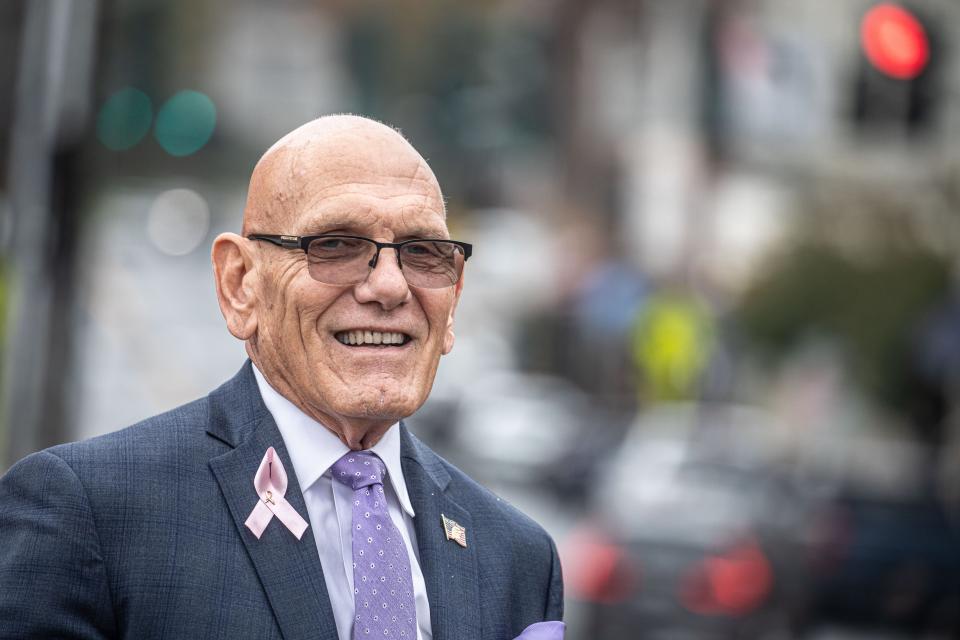Question: How does a school district go broke with $1.1 billion in revenues?
Answer: When it spends $1.3 billion.
This macabre joke is all-too real for San Francisco Unified, where this spring a state oversight panel took control of all budget decisions until the district balances its spending. After reviewing the district’s budget, the oversight panel decreed that the locally elected school board no longer has full authority over, “any action that is determined to be inconsistent with the ability of [the district] to meet its obligations for the current or subsequent fiscal year.”
Get stories like these delivered straight to your inbox. Sign up for The 74 Newsletter
According to an independent fiscal analysis, the district has a number of budgetary problems:
-
It paid for employee positions using one-time federal relief funds and will need to lay them off or find other revenues or savings;
-
It has not adjusted student enrollment projections to account for continued declines;
-
It does not track monthly attendance data and, as a result, overstates average daily attendance in projecting future revenues; and
-
Its budget office is understaffed, leading to inadequate control over its payroll system and problems tracking employee overtime costs.
Some parts of this story make San Francisco unique. For example, it spent $40 million in a failed effort to fix its payroll processing system. And, to avert a strike last fall, the district agreed to large salary increases — 19% over two years for teachers and 16% for service workers.
California is also unusual in that it has a powerful oversight agency. The Department of Education’s Fiscal Crisis Team reviews district budgets to ensure they are financially solvent, and it can take over budgeting decisions if the need arises.
Through these reviews, San Francisco was first put on “qualified” notice in December, which shifted to “negative” in May. The auditor in charge of San Francisco’s review noted that the district now spends more money than it brings in, and with that will come added scrutiny over all its budgetary decisions until the district can demonstrate that its books are in order.
That’s a different and more active oversight role than exists in many states.
Still, in many ways, San Francisco is a canary in the coal mine for much of the country. There are a few common factors to look out for:
Does the district have underenrolled schools?
San Francisco has 4,000 fewer students than it did a decade ago and projects it will lose another 4,600 by 2032. In those same projections, the district leadership noted that nearly all schools in all grades had unfilled seats.
Exclusive Data: Thousands of Schools at Risk of Closing Due to Enrollment Loss
And yet, despite the enrollment declines, the district has not closed schools, and the city’s teachers union has pushed for that moratorium to continue. But by delaying those hard decisions, the district has spread itself thin, because it’s harder to provide a full range of services at severely underenrolled schools.
California schools have suffered bigger enrollment declines than other parts of the country — and those are projected to get worse in the coming years. Still, more than two-thirds of public school districts nationwide have fewer students than they did pre-pandemic.
Are the district’s staffing ratios financially sustainable?
San Francisco actually looks better on this metric than many other parts of the country. While three-quarters of districts nationwide have lowered their student-to-teacher ratios over the last few years, San Francisco has not.
The district has also kept its total staffing levels in check. Unlike many others, it did not hire a host of new administrators, paraprofessionals, school counselors or other support staff.
However, that’s not for lack of trying. In December, one of the first steps the San Francisco school board took to reduce its long-term budget deficit was to eliminate 927 unfilled positions. This month, the district agreed to impose an immediate freeze on new hiring.
Media reports last fall decried San Francisco’s teacher shortages and cited the number of vacant positions the district had. But with a stroke of a pen those “vacant” positions went away once the district realized it could not afford to hire more people.
In fact, San Francisco’s actions are what make it such an important warning for other district leaders across the country. Many districts haven’t faced the same external pressures that San Francisco has, and yet, too many places are overstaffed and underenrolled. That combination could make for painful budget discussions in the coming years.
Signup bonus from





